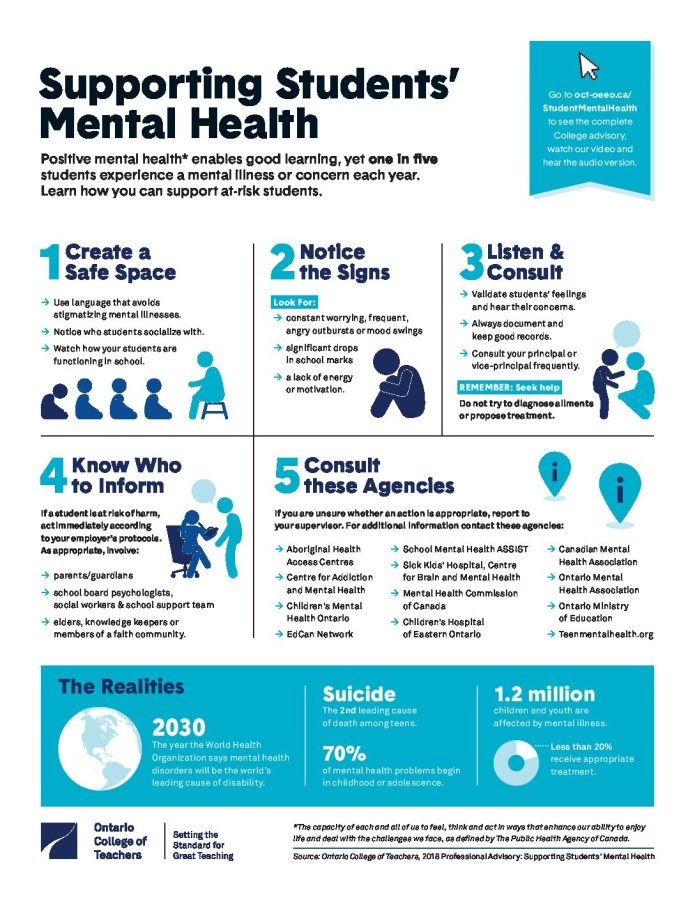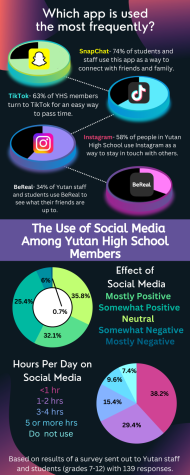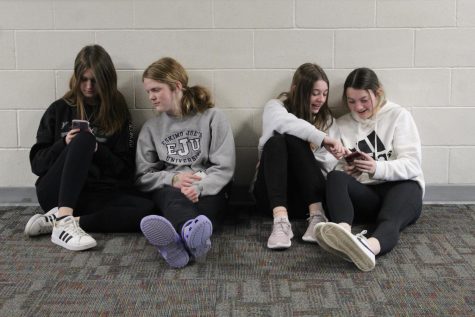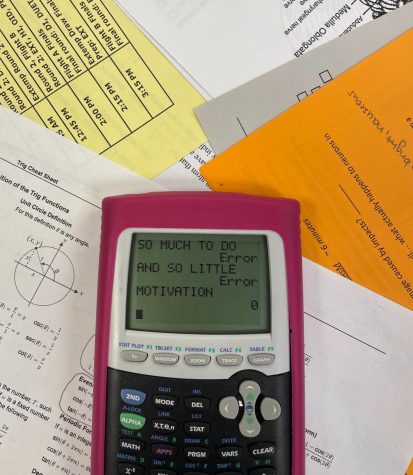The crumbling state of teenage mental health
An insider’s look at the problems and solutions
Your teenage years are said to be the best years of your life. Being voted for prom royalty, winning the state championship, being named valedictorian, and laughing with your best friends are all part of living this dream, but the teenage dream is more of a nightmare once you see everything happening behind closed doors. The most popular girl in school has an eating disorder, the best athlete has a vaping addiction, the smartest kid in class has to deal with constant bullying, and the class clown has to clean up his dad’s beer bottles every morning. Today’s teens have more to deal with than ever before, causing one of the biggest mental health crises our nation has ever seen.
Among youth ranging from ages 12-18, mental health cases are increasing. According to WebMD, nearly five million teens are diagnosed with a daily-affecting illness and 20 percent of teens in America will be diagnosed with one in a given year. Also, data from the CDC showed that 13.6 percent have received treatment for their illness in the past year, whether it be the 10 percent of adolescents who have received counseling or the 8.4 percent who have taken medication. In support of these facts is Children’s Mental Health talking about how dramatically teens’ mental health is affecting our society. One in five teenagers living in the United States experiences a mental disorder, costing individuals, families and society an estimated 247 billion dollars.
With all the constant negative thoughts running through their minds, teens try to distract themselves in other ways: sports, alcohol, drugs, social media, overload on work or even self-harm. According to the FDA and CDC, 11 percent of high schoolers and 3 percent of middle schoolers have vaped in the last 30 days. Discovered by Drug Overdose in Youth, 4,777 deaths have come from overdosing on drugs amongst teens in a given year. Teens are turning elsewhere to deal with societal pressure, and these distractions are only temporary. All of this can even lead to the greatest permanent consequence, suicide. According to National Survey on Drug Use and Harm Data Review, there are 3.4 million planned suicides in a year and over 1.4 million follow through. Among those millions of people, Kid’s Data found that about 6,500 teens in the United States commit suicide per year, and sadly those numbers only increase worldwide. Even 1.3 percent of ten-year-olds, TEN-YEAR-OLDS, have admitted to trying to take their own life. This is the highest rate in 28 years.
While these statistics might just be numbers to some, they are not to me. The massive mental health crisis is prominent in our lives and can even be seen in mine. I’m a straight-A student, state journalism winner, state-speech qualifier, kicker for the football team, starting point guard for our girls basketball team and state-qualifying pole vaulter, and I too struggle with my own diagnosed mental health conditions. I deal with OCD, severe depression and chronic generalized anxiety every day. After my dad left my family, I was forced to help out more around the house and slowly came to realize the sad truth in this world: things aren’t always permanent. This became even more evident as I started growing up almost too quickly for my age. I began noticing the people around me drinking and vaping on a daily basis. I would also have to stay up at night giving my friends reasons to stay alive. I’ve seen people I love abused, cheated on and almost die before the time they turn 18, and sadly I’m a part of that group. Everything had become a priority over my mental health and stressed me out to the point that I was so tired I could barely get out of bed in the morning. I was overworked and felt worthless due to the part of my life where I lost myself, my happiness and my overall head space.
But this situation is not without hope. There are ways can reduce the effects of this on our teens. For starters, the teens who are faking their happiness, stop hiding it. I’ve tried the “fake it till you make it,” and what I’ve learned is that you never know when or if it ever becomes real. So instead of running from my problems, I’ve been forced to face them. This could mean talking about them with someone else, writing them down, or simply acknowledging something that bothers me. Along with this, I’ve learned that things that happened in the past aren’t what define me; it’s how I respond to what has happened that does. And I think that’s something a lot of us need to hear. We are always caught up in what we could have done or what we should do rather than what we are doing RIGHT NOW. Focusing on the moment and embracing it is something that a lot of us struggle with, and isn’t always the easiest. This is where distractions or, as I like to call them, mind breaks come into play. This can include things like listening to music, smelling a certain aroma, putting a Lego set together, going to the gym or even taking a nap. Sometimes we need time to reset and simply breathe. The final and probably most important thing I’ve learned is that you have to put yourself first. The only person that is always going to be there for you is you, but that doesn’t mean you can shut out your loved ones because, believe it or not, there are so many people who care about you and are proud of you. You just have to know that in order to help those around you, you have to help yourself first.
Which leads us to the adults, the ones that care and want to help, what can you do? There is no magic solution to helping these teens because it’s just part of growing up. But what adults can do is first build trust. By having that trusting relationship, teens are more likely to talk and open up. The lack of communication between adults and teens is part of the reason the crisis is so large. We have become accustomed to pushing things like this off, only to create a bigger problem down the road. Offering help and providing it, whether it be as an adult or a professional, is probably the best thing for these teens. However, not everyone accepts help in the same way, which is why there is no perfect ending—but that doesn’t mean there can’t be a happy one. Life is a constant pendulum swinging back and forth. Just because there’s a mental health crisis now doesn’t mean there will always continue to be one. Life has a funny way of balancing itself out. I think even having adults and teens educate themselves on common signs of mental health conditions and ways to calm common stress factors is a big leap forward.
Simply addressing the problem is the first step, and by reading this, you are doing just that. The next step is to try and fix the problem. Problems don’t fix themselves. Things have to change; specifically, people need to change their ways of thinking. However, in order to make it change, it has to start with one. So why not be the change and start now? It could start small by talking to someone else or go as far as trying to help yourself. It’s our “teenage dream” now—we decide what happens next, and the easiest and sometimes hardest thing you can do is make the choice to keep living it.
Your donation will support the student journalists of Yutan High School. Your contribution will help cover our annual website hosting costs, as well as allow us to purchase equipment and produce more in-print editions.






